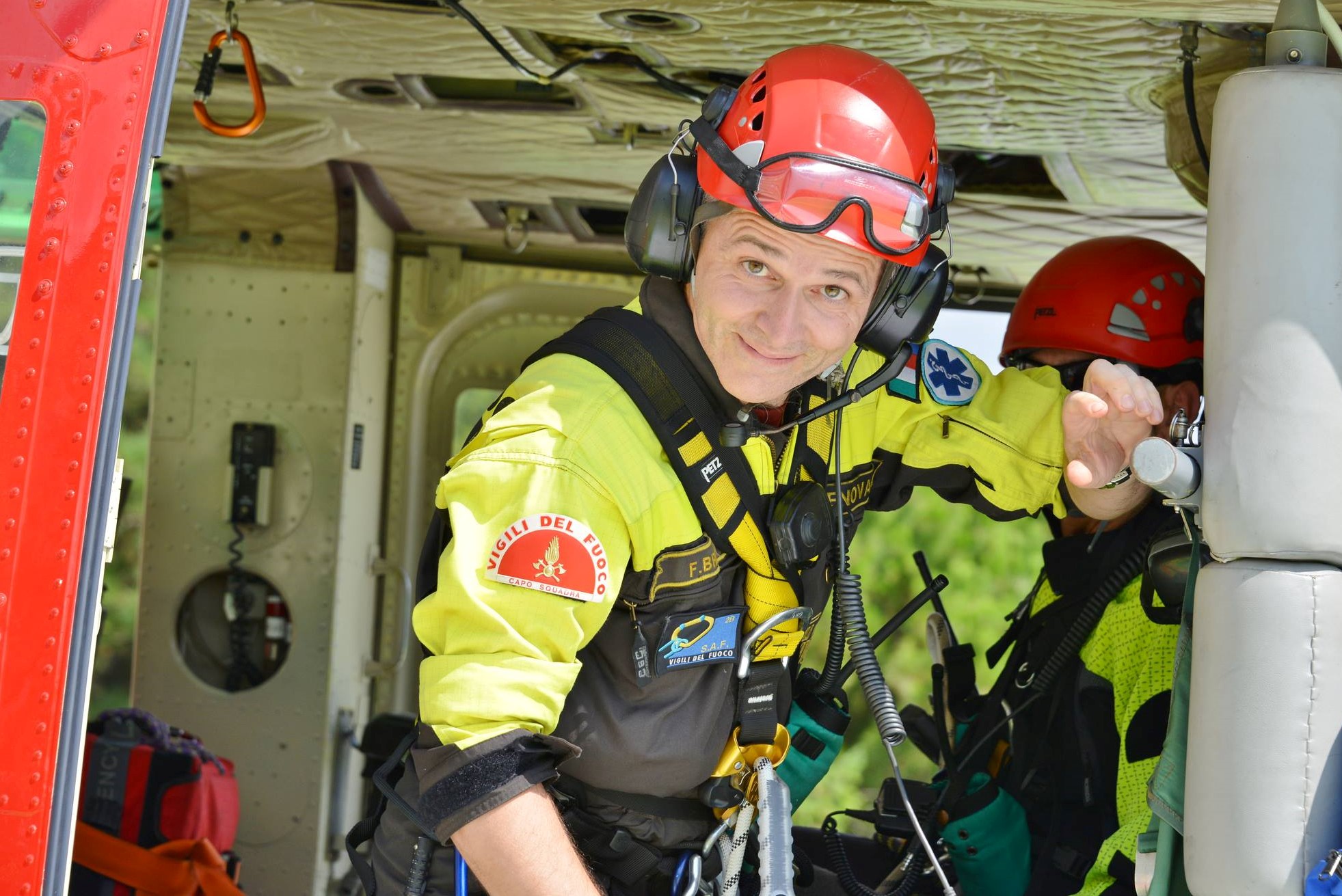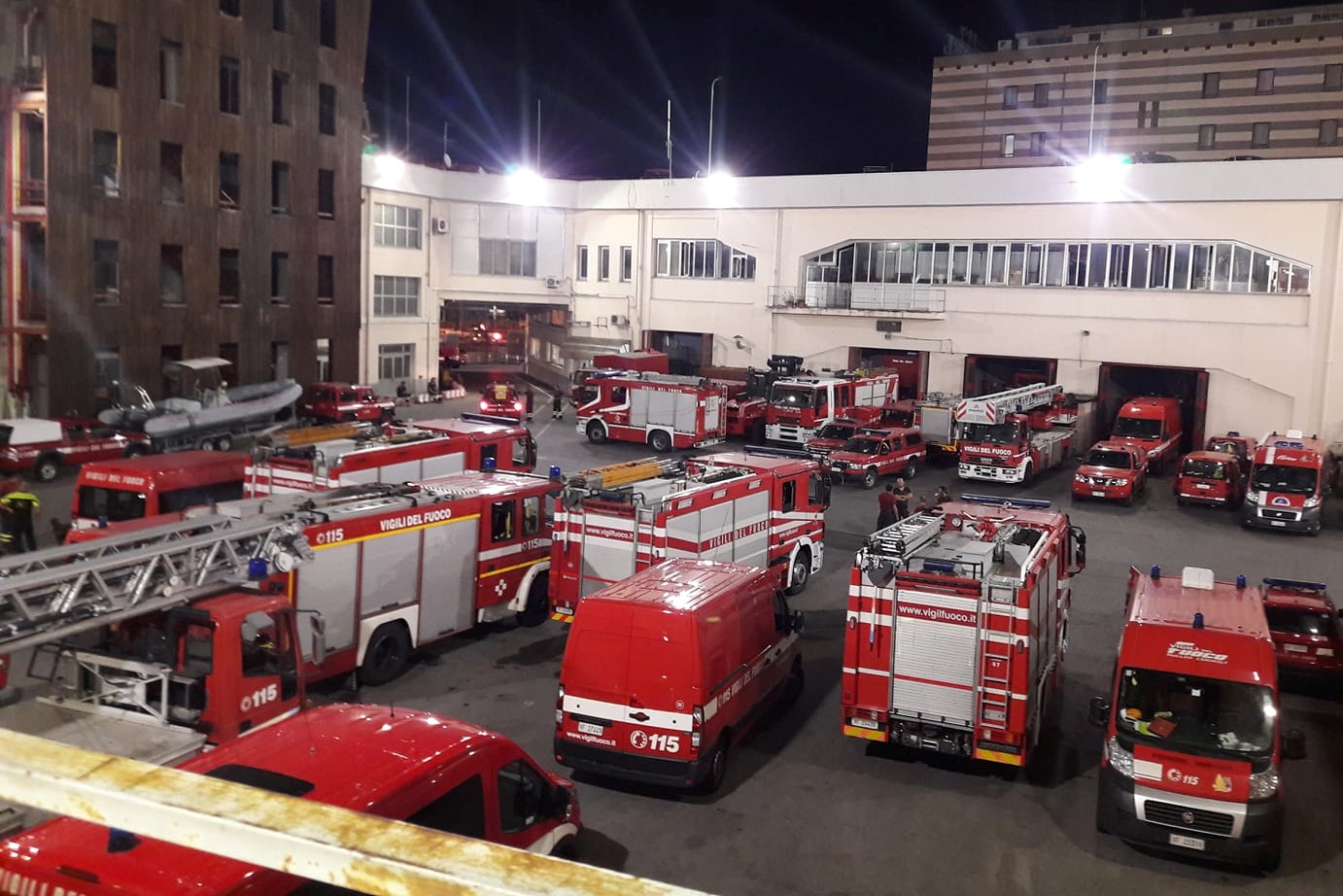
Emergencies and 112, EENA meets Italian firefighter Federico Brizio: the interview
Emergencies and 112, EENA meets Italian firefighter Federico Brizio. Federico is a control room coordinator for the fire service in Genoa (Italy). He’s been working in the control room for the last 10 years
Before that, he worked in the field as a firefighter and in a helicopter crew as a rescuer.
Among other roles, he is a member of the Technical Assistance and Support Team (TAST), operating also in the framework of the European Civil Protection Mechanism, taking him across Europe and beyond to advise communities during disasters.
This included an experience in Haiti’s capital, Port au Prince, as a First Aid Instructor in an Urban Search and Rescue (USAR) course for Haitian firefighters, in the aftermath of the Haiti earthquake in 2010.
The emergency call centre is at the heart of emergency response. What inspires a person to work there?
“In the emergency call centre, we can really make a difference.
My main motivation is helping people during those first moments of an emergency.
The first seconds are vital. Of course, you need technical skills but also non-technical skills.
To be able to support people and understand them: it’s often a challenge but it’s so rewarding. We must be always ready and well-trained.
In my professional life, I’ve experienced many different sectors and I believe that it’s really important to take that experience inside the call centre.
Emergency call handling is all about teamwork. In my team, I have 2 or 3 young colleagues who are extremely skilled in new technology.
I think having an ‘old man’ like me working alongside them is important because I have the experience to help them manage the situation in the best way possible.
That’s why it’s so important to me to stay working in the control room.”
With such an important role, emergency call-takers need to handle a wide range of challenging emergencies…
“I work in Liguria and here there are many challenges.
We have an important European historic centre, with narrow streets and tall buildings, making rescues complicated.
We also have the most important commercial port of the Mediterranean Sea, a chemical port, four motorways… It is also at a complicated crossroads because our land is very particular.
Liguria is made up of steep land overlooking the sea.
So, we deal with lots of different emergencies.
Fires, of course, but also rescues of hikers and climbers, sea rescues, vehicle incidents, gas leaks.
Wildfires are problematic because the land is so steep.
The fire can spread extremely fast because of the canyon and the strong wind along the coast.
The most dangerous emergencies we face are flash floods.
The onset is sudden because of the steep ground, so we often do not have time to request more resources.
Many people live in small, remote villages that are difficult to access even in the best of conditions.
And often in heavy rain, the helicopters can’t fly because of the wind or lack of visibility.
It’s so frustrating because we receive calls from people who have water up to their waists and we are so far away.
We often ask help from other fire departments during the flash floods because we become overwhelmed.”
![]() During these emergencies, what are the main responsibilities of the emergency call centre?
During these emergencies, what are the main responsibilities of the emergency call centre?
“When an incoming call arrives, we take down the information about the event, the safety and security on-site, then we send the appropriate resources. Our motto is right resources, right time, right place.
An important part of our job is providing pre-arrival instructions to improve people’s chance of survival while the rescue is on its way.
The pre-arrival instructions need to be understandable and clear for anyone from the age of 7.
It’s really not easy to write them – we’ve had a lot of arguments about them!
But in the end, they are very useful and we’ve saved a lot of lives because of them.”
Collaboration between agencies and organisations is also crucial…
“Every day, we have an excellent collaboration with different emergency call centres.
At a strategic level, in Italy, we have a rescue coordination centre for times of disaster.
It is managed by the Prefect and includes representatives from all emergency services.
It’s highly effective because it means we can make the right decision together and quickly.”
In times of emergency, citizens’ behaviour can have an important impact. How can citizens know how to respond?
“Citizens can help by following the recommendations given by official sources like the Civil Protection agency, 112 or other emergency services.
There is a high risk of misunderstanding if you don’t consult official sources.
This is a problem for our emergency call centre. We’ve answered calls where people have said ‘I’m not on-site, but I’ve just heard that in town X there are lots of problems, people are underwater due to floods.’
Sometimes this is not true, because the information was picked up from an unreliable source on social media.
It diverts resources away from real emergencies.”
We should always keep in mind that emergencies may also impact the running of the emergency call centre. Ensuring continuity of service is crucial…
“Our control room is located on a crossroads, where 20,000 trucks pass every year and 12,000 are carrying dangerous goods.
Right in front of us, there is a port that is a potential terrorist target. Under our feet runs the most important gas pipeline.
And one or two times a year they are defusing World War II bombs in the port.
Evacuation of our control room is not a remote problem.
Of course, this could not have been expected years ago when it was designed, but now it has become a real problem due to urban development and social changes.
So, I’ve proposed a solution with the 112 call centre so that we can transfer calls to them while we are evacuating.
It would be only a few minutes, but these minutes are very important for those calling us.
Currently, we also have a radio suitcase and notebook computer ready to move as quickly as possible to another call centre.
This would take 5-6 minutes so we can improve this with the collaboration with the 112 call centre.
Of course, we also have to think about a potential saturation of calls in a large-scale emergency.
When a disaster happens, we move from a vertical structure of the call centre to a horizontal one.
In a vertical structure, a call-taker answers a call and sends resources.
In a horizontal structure, we have 2 different rooms, one receiving calls, the other dispatching resources.”
New technology can play an important role in assisting emergency call-takers. We should always be on the lookout for ways to improve processes and save more lives…
“Helicopter crashes, hazardous materials, ship fires… these operational challenges become normal for us to handle.
But one of the most difficult challenges is not operational at all: it’s the challenge of opening minds to change.
I’m always trying to open people’s minds to new technology and to think about how we can change our system for the better.
I think that meeting with emergency services and experts from different countries can really help to open our eyes to the future and the huge opportunities that are out there for improving the control room.”
When carrying out all this lifesaving work, what is the most rewarding part of the job?
“At the end of the day, doing a good job is the best reward for me.
People who are alive today because of us: that is the best reward.”
With thanks to Federico Brizio, firefighter in Genoa, Italy.
Read Also:
Defibrillator Transport By Drone: Pilot Project Of EENA, Everdrone And Karolinska Institutet
Contagious Coronvirus: What To Say If You Call 112 For Suspected Covid-19 Infection
Fires And Drone Use, Google’s Project For Rapid Emergency Response



